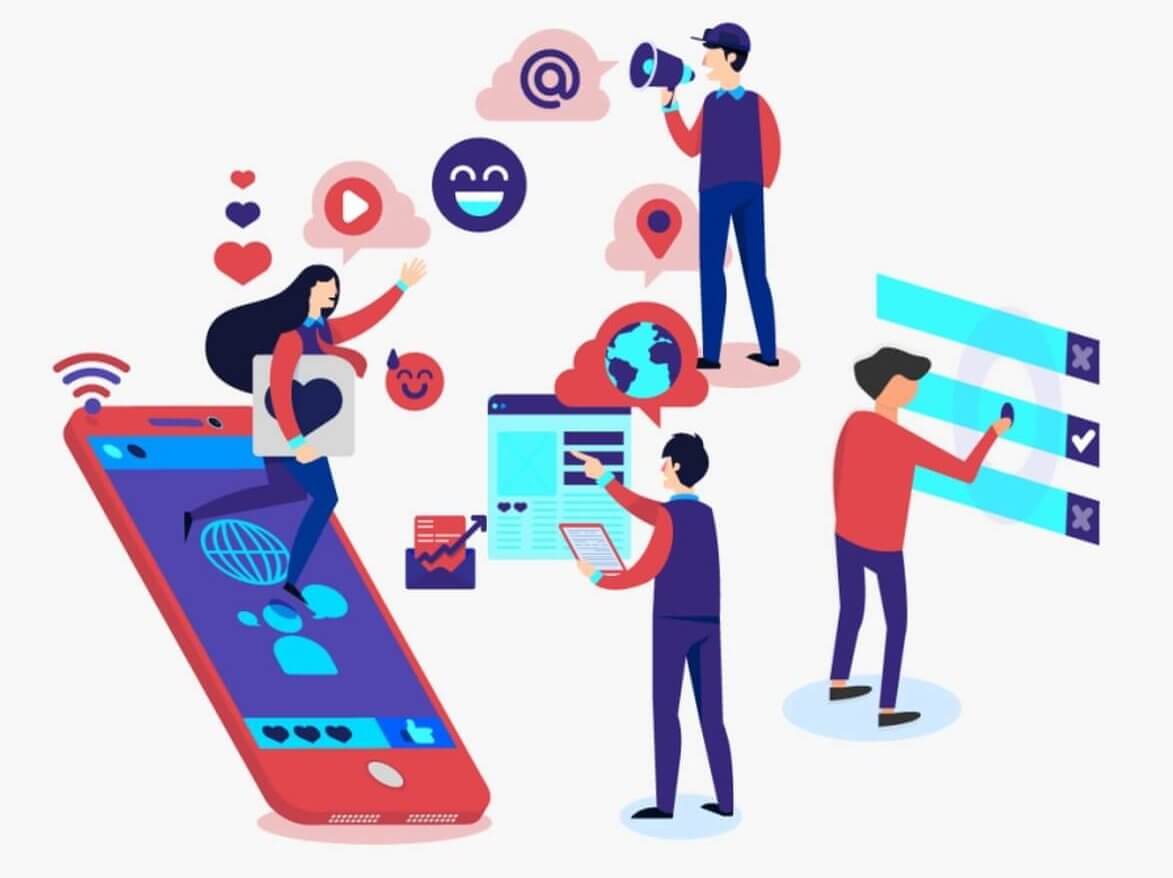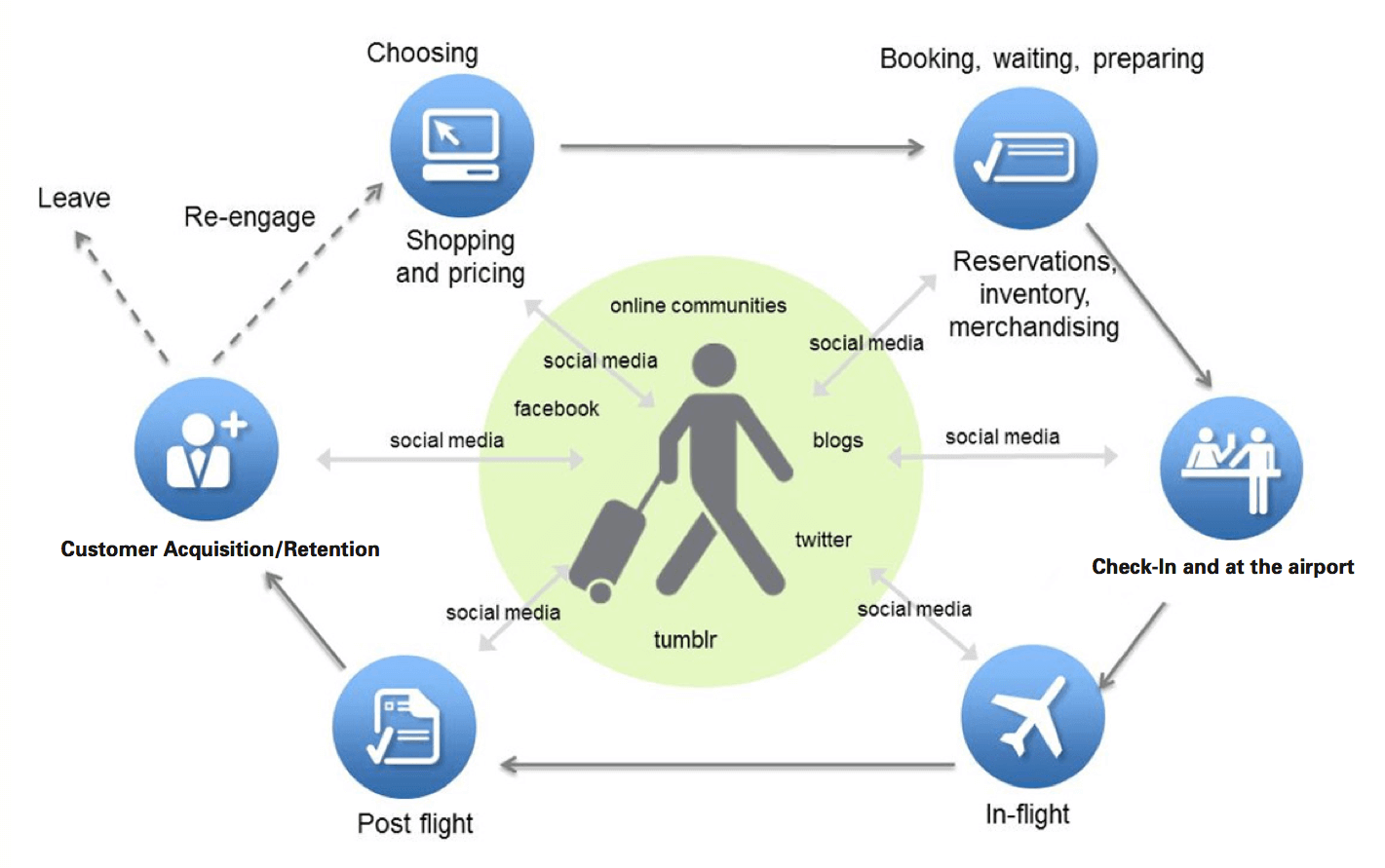Happy New Year to all you Customer-first strategists. May your year by bright and your customers surprised and delighted!
Each January we like to celebrate our most popular posts on customer centricity that were published on C3Centricity during the year. Just like 2020, covid has forced all of us to be a little more creative and a little less demanding in our work.
Here at C3Centricity, we reviewed and updated many of our cornerstone, evergreen articles, so you may recognise a few of them from last year in this list. However, they still make great reading and a reminder that we’re all in business to satisfy and delight our customers. And if you’d like a surprise too, then I have one for you at the end of the post. Enjoy!
#1. The 6 Best Ways to Show you Respect your Customers
 This is another evergreen post that has been popular amongst our readers for several years. It has moved from second position, to take the top spot in 2021. The article shows you how to connect with your customers and gather their information.
This is another evergreen post that has been popular amongst our readers for several years. It has moved from second position, to take the top spot in 2021. The article shows you how to connect with your customers and gather their information.
It also has some tips on how to build a good relationship with them and respectfully let them leave if they no longer want to connect with you. Making it hard for them just makes you lose image.
If you’re ready to adopt a customer-first strategy, check out our online course on the topic HERE.
#2. Five Rules of Customer Observation for Greater Success

This post has been amongst the top articles on C3Centricity for many years. It is regularly updated so it remains highly relevant in today’s marketplace.
Its popularity clearly shows the need we all have to understand how to get up close and personal with our customers – the right way.
The 5 rules it includes are easy to follow and will make every occasion to watch and listen to your customers so much more interesting and valuable.
And if you want to learn how to watch and listen more effectively to your customers, then check out our training courses HERE.
#3. Five Brilliant Ideas to Boost your Insight Development
 This post remains the third most popular one on C3Centricity. Ever wondered why you struggle to develop actionable insights? This post shares some of the main reasons why even large companies fail at this essential art.
This post remains the third most popular one on C3Centricity. Ever wondered why you struggle to develop actionable insights? This post shares some of the main reasons why even large companies fail at this essential art.
Insights are the foundation on which every single successful brand is built. If your brands are lacking strong positive growth, they are probably missing that insight that will make them powerhouses.
So it is vital that you learn how to develop them and then how to action them in your communications and innovation. Again, if you struggle to action your insights, you’re most certainly missing one of the steps covered in this post.
To stimulate your thinking, the article includes many real-world examples of how great insights can be turned into powerful ad campaigns that connect with customers and motivate them to buy.
If you’re ready to finally learn how to develop actionable business insights, check out our online course on the topic HERE.
#4. How to Map Your Customer Journey & Overlay their Emotions

The popularity of this post highlights the importance for businesses to better understand their customers’ purchase journey as more buying went online.
Through a personal example the article includes three suggestions to improve your understanding of your customer journey mapping:
1. The customer journey map needs to integrate all possible contact points. If you miss even one, your map will be incomplete and your understanding will be lacking too.
2. If you mess up admit it AND correct it. Find a solution that is acceptable to your customer, not just the quick fix that suits you. And go further by not just satisfying but aim to surprise and delight them too.
3. Follow up to make sure the customer is happy. Replacing a faulty product or service is what our customers expect. Offering free samples, a further discount, express delivery or additional attention is not. These are the small touches that surprise and delight and you will go from the bad guy to the cool guy.
And if you want to learn how to update your own customer journey maps, then check out our training courses HERE.
#5. Is Packaging Part of Product or Promotion? Should it be Both?
 This post remains in fifth position highlighting the importance of making packaging more than just the protection of your product or giving it more impactful online presence.
This post remains in fifth position highlighting the importance of making packaging more than just the protection of your product or giving it more impactful online presence.
The article shares many great examples from different industries including food, beauty, and even services such as bathroom facilities in airports.
The learnings will guide you in connecting with your users before, during and after purchase, and suggests ways to then keep them loyal to your brand.
And if you want to learn develop more customer-centric packs, or would like an audit of your current packaging, then please contact us HERE so we can discuss your options.
#6. A Winning Marketing Plan: 9 Questions Every Marketer Should Be Able To Answer
 Another new post appearing in the top ten this year explains how to develop winning marketing plans – not just for your business, but for your career too!
Another new post appearing in the top ten this year explains how to develop winning marketing plans – not just for your business, but for your career too!
We all have to define our plans each year and get them approved by top management. This article discusses the 9 most commonly asked questions of executives and how you should answer them so they are not only satisfied by your replies, but impressed too. The questions are:
- Who are our brand’s customers?
- How much are our customers worth to us?
- What’s the return on our marketing budget?
- How much will we sell and what market share can we expect this year?
- What do our innovation plans for the brand look like?
- What do we know about our carbon footprint?
- How’s the competition doing?
- How’s our distribution these days?
Now you might be wondering where #9. is; well I leave you to check out the post to see, as it might surprise you.
And if you want to upgrade your own marketing plans, please contact us HERE so we can discuss your options.
#7. How to Take Local Brands Global: The 5 Rules to Fortune
 A new entry in the top 10 this year, coming straight in at #6. The post shares five rules to follow to succeed taking a local brand to regional or global success. These include:
A new entry in the top 10 this year, coming straight in at #6. The post shares five rules to follow to succeed taking a local brand to regional or global success. These include:
- Understanding the market and how it’s changing. Even if you are rolling out to geographically adjacent countries, the trends are not always the same, so it’s worth checking rather than assuming they’re similar.
- Understand the customer’s perspectives. The brand has a certain image which may be less relevant in your new target marketplace. Make sure you understand which elements are worth supporting and which others you should ignore. You may also find there are new elements of your brand that will appeal to your new market’s customers.
- Following on from the above, using Maslow’s hierarchy of needs to understand what solution you are proposing to your new market and then base your brand on a relevant human truth.
- If you have taken advantage of heritage or country image in your local market, check whether or not they are relevant in the new country. Associations of French beauty or fashion, German automobiles or Italian food should be useable in many countries, but other categories may have local specificities not relevant outside their territory.
- Finally the category and how the products are used may vary widely by market. Never assume your new customers will use your brand in the same way.
As you can see, the recommendation on all points is to take time understanding the customers in your target market before rolling out. It is only when you have understood their similarities and differences can you decide whether or not your brand is likely to find success in the new country. Never fall into the trap of geographical proximity being a guarantee of similarity. These days it’s rarely the case.
And if you want to learn more about rolling out your successes regionally or globally, then please contact us HERE so we can discuss your options.
#8. Brand Portfolio Secrets to Success (5 Things You Need to Know)
 Another evergreen entry in the top ten, down one place at #7, this post highlights some of the errors marketers make when wanting to expand their brands.
Another evergreen entry in the top ten, down one place at #7, this post highlights some of the errors marketers make when wanting to expand their brands.
It concludes with 5 ideas to improve your brand portfolio management:
- If you offer a vast choice of variants, consumers could get analysis paralysis and end up walking out of the store without buying anything.
- Manage the corporate brand just like your other brands, especially if it appears prominently on packaging or communications.
- Ruthlessly cut the bottom 20% or your brand or service offerings. If you want to keep any of them, then you must have a good reason – such as that it’s a recent launch – and a planned budget to actively support them.
- Innovate less but bigger, bolder and better. Be more targeted with each innovation and include your consumers in their development.
- Be realistic in your distribution targets. Know what will sell where and why. Not only are you more likely to keep your share, but you’ll also make friends with your retailers.
And if you want an audit of your current portfolio to identify your new opportunities and current space-waster, then please contact us HERE so we can discuss your options.
#9. How to Measure Customer Centricity the Right Way
 This post has jumped from position #18 to #8 this year, which suggests an increased interest in customer centricity – which I am ecstatic about.
This post has jumped from position #18 to #8 this year, which suggests an increased interest in customer centricity – which I am ecstatic about.
As the saying goes “what gets measured gets managed.” So assessing your progress when you adopt a customer-first strategy is important, very important. But how do you do it?
This post explains how to measure customer centricity and shares results from around the world. It concludes with a useful 7-point summary of the analysis shared in the article. It also gives a link for you to measure your customer-centricity – for FREE! – so what are you waiting for?
If you’re ready to adopt a customer-first strategy, check out our online course on the topic HERE.
#10. The Good, Bad and Downright Ugly Parts of a Head of Marketing Job
 The position of head of marketing has come under a lot of criticism in recent years and research shows that CEOs trust their CMO far less than most of his other board members. Perhaps that’s why the position has one of the shortest tenures, of less than three and a half years!
The position of head of marketing has come under a lot of criticism in recent years and research shows that CEOs trust their CMO far less than most of his other board members. Perhaps that’s why the position has one of the shortest tenures, of less than three and a half years!
In addition the marketing budget has come under tougher scrutiny and marketing heads are being asked to prove the ROI of their investments.
The most influential CMOs recognize that their ultimate job is driving business growth. And to do that, they play a larger role, taking on additional responsibilities in areas as diverse as internal culture, talent, IT purchasing, and customer engagement. Talk about broadening their skill-set!
So here are a few ideas on how to prove that a CMO is worth far more than most board members realise.
- Mission and vision of the company. These are important for CMOs to understand, since it is their actions that will bring them to life, including the corporate brand as well! It is their role to ensure that all the brands in the current portfolio are a good fit for the company’s aspirations. And when this is not the case, they need to courage to admit it and then to make plans for moving them out.
- Once a CMO understands the company’s mission and vision, it’s important for them to evaluate how well these are integrated into the daily working of all employees.Dare to ask the naive questions of your peers and colleagues, so you have a global view of business from every department’s perspective.
- Every CMO has more information available to them than either they know, or can use. Some organisations are very rich in terms of data and know it. But many more are rich and don’t know it. Find out what’s available then add AI and ML into the mix (sic) for more powerful marketing mix modelling.
- Creativity alone is no longer enough to be an excellent marketer. They need a whole list of other skills and the article lists 20 of the most important ones.
- All positions use processes and the head of marketing is no exception. Theirs should follow the six-step formula explained in the post: prioritise, strategise, structure, motivate, excite and lead.
If you would like to review your current Head of Marketing position, their strengths, opportunities and responsibilities, then please contact us HERE so we can discuss your options.
So there you have them. Our ten most popular posts of 2021 on the topic of adopting a customer-first strategy. Did you find your own favourites among them? Did you see any that you missed or forgot about, and have now found useful after having had the chance to read them? They cover all the important aspects of customer-centricity, as well as the skills that you need to grow your brands faster and more profitably. So I think they are a great summary of all the important elements of adopting a customer-first strategy.
Looking to 2022, I would love to hear what topics you would like me to cover. You can also share what challenges you think you will be facing in the coming year and where a little extra support would be useful to you.
If you’re in a hurry for you and your team to start working on one of your challenges right away, why not give me a call? I keep a few spots open every day to offer the opportunity for anyone to reach out for some free advice. I should be able to point you in the right direction towards a viable and fast solution to whatever you’re facing.












